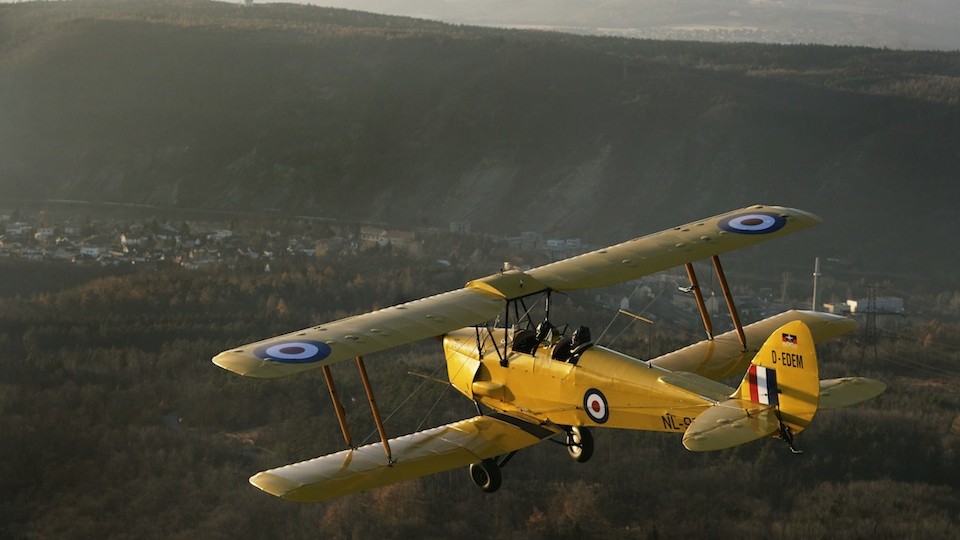The world-famous Tiger Moth was created by installing a Gipsy II inverted engine into the DH-60 Moth airframe. After operational tests and subsequent modifications the British Air Ministry ordered production of the first series in 1931. In early 1932 F. Halford developed a more powerful version of the Gipsy III engine – the Gipsy major I of 130 HP. The Tiger Moths powered by Gipsy Major I had a strengthened fuselage structure and were designated DH-82A.
At the outbreak of WWII there were over 300 machines in Aero Clubs and another thousand were supplied to the RAF. During the war 4.005 machines were delivered altogether. The DH-82A was produced under licence in Canada, Australia and in the New Zealand, and was also assembled in India. Eight thousand eight hundred and eleven machines were produced in total, and they served around the world.
Our Tiger Moth was built 1943 by Morris Motors and served with the RAF until 1954. It is currently flying under german register as D-EDEM wearing the colours of the RAF College in Cranwell, where it served in the late 1940ies. The owner, David Potuznik, operated the aircraft out of the airfields of Niederoeblarn in the austrian alps, as well as Schaerding-Suben near the austrian-german border.
Since two years the Tiger shares a hangar with several vintage airplanes of the Quax-Fliegerverein at the airfield of Bienenfarm near Berlin.
Technical data
Engine: Gipsy Major I
Power: 96 kW (130 HP)
Wingspan: 8,94 m
Length: 7,29 m
Empty weight: 506 kg
Take-off weight: 828 kg
Maximum speed: 167 kph
Service ceiling: 4257 m
Range: 480 km










